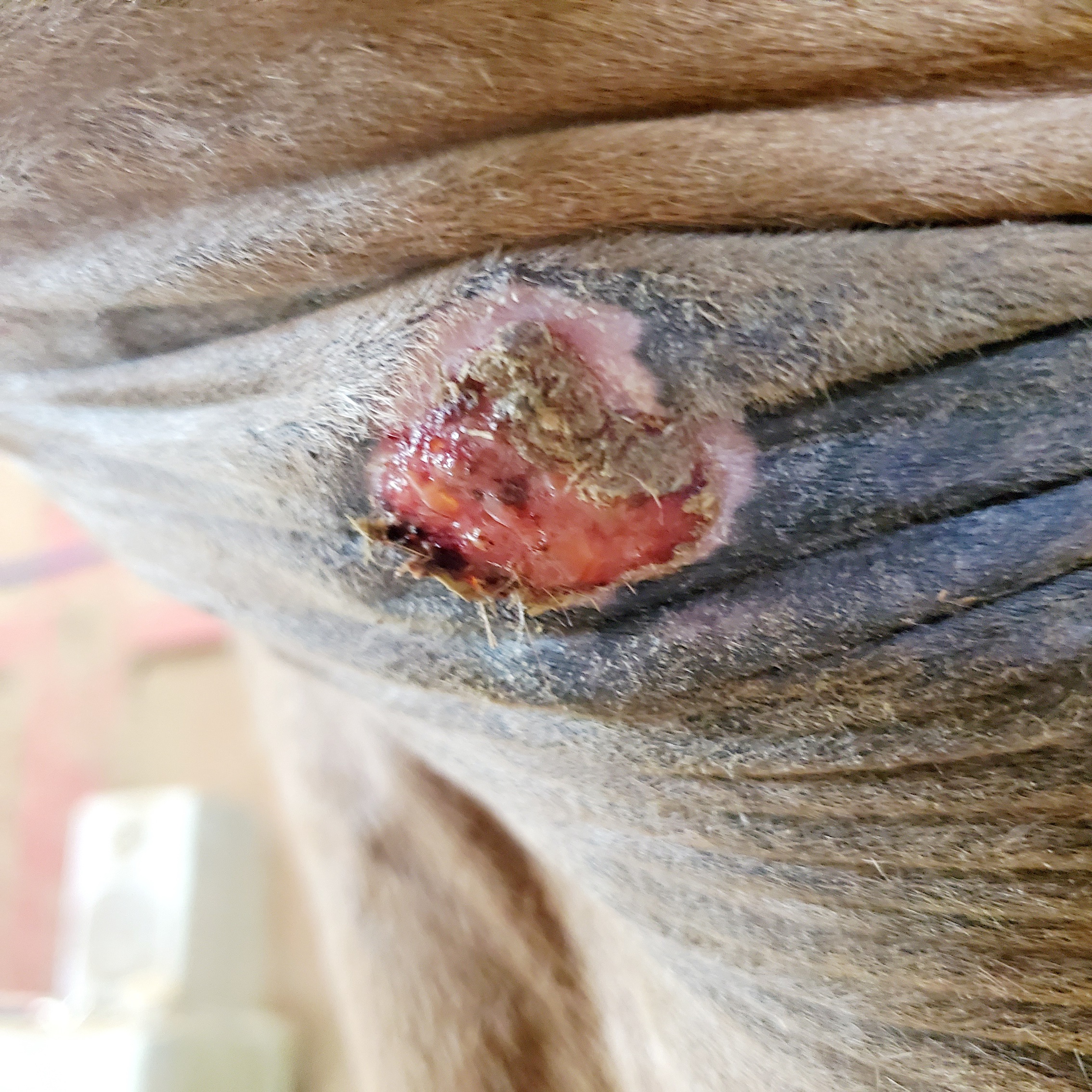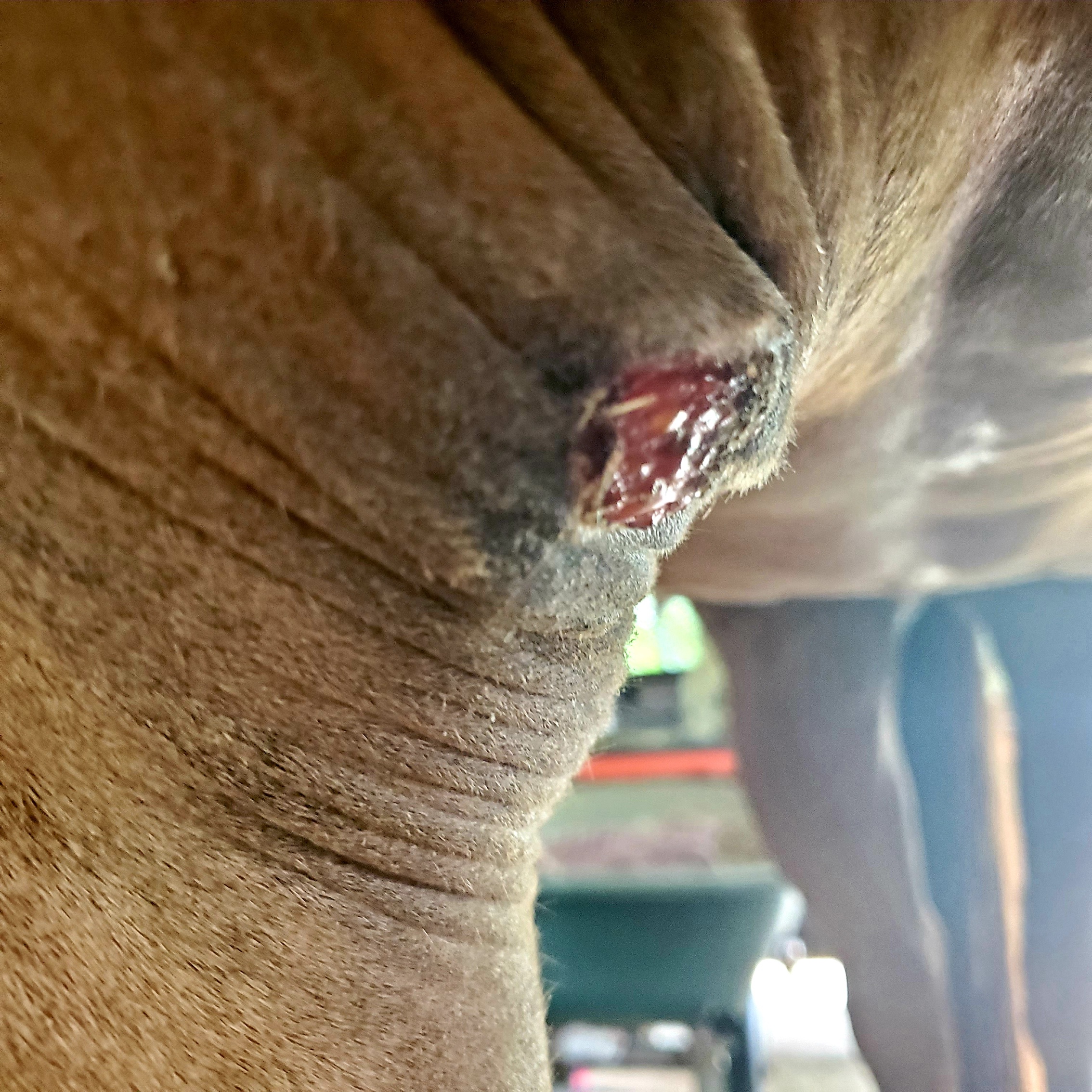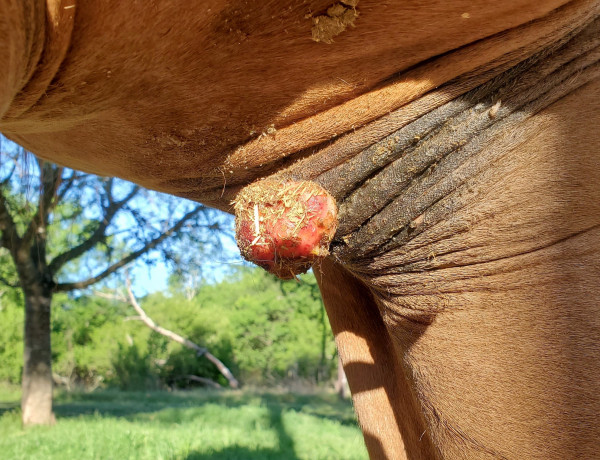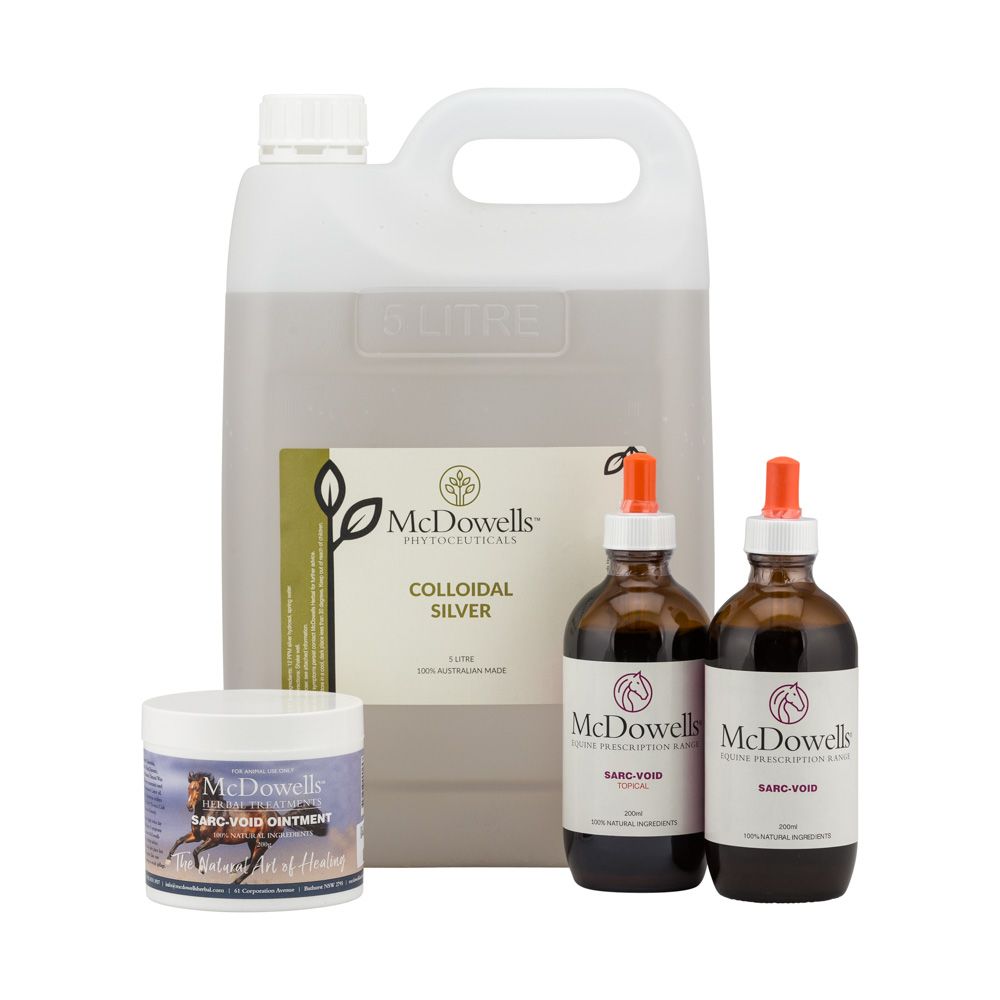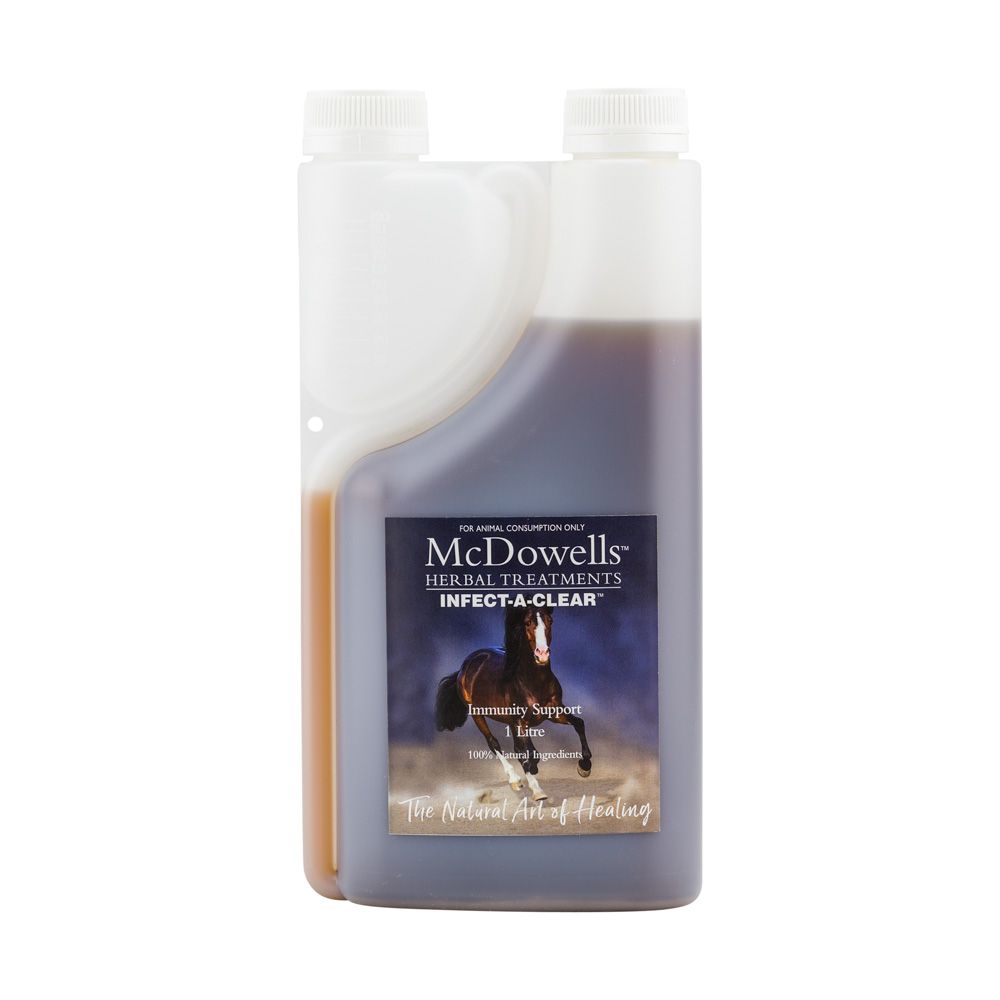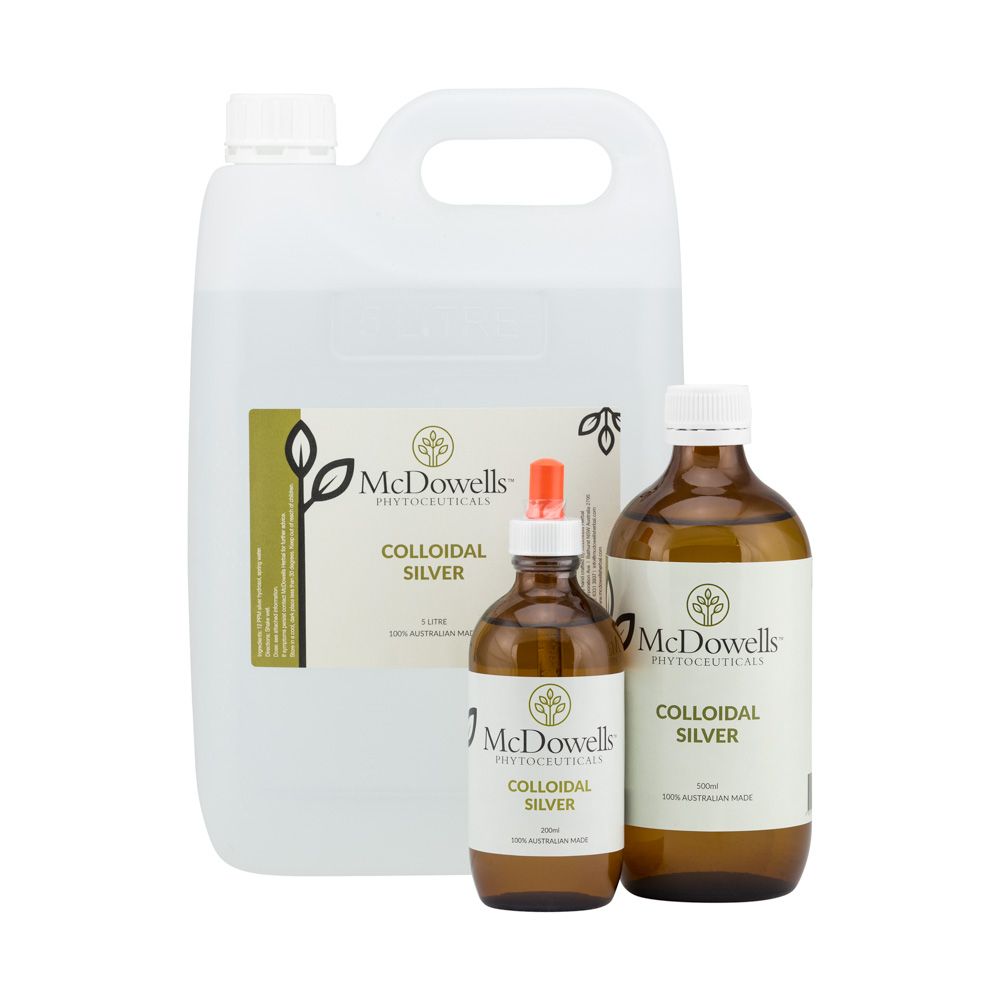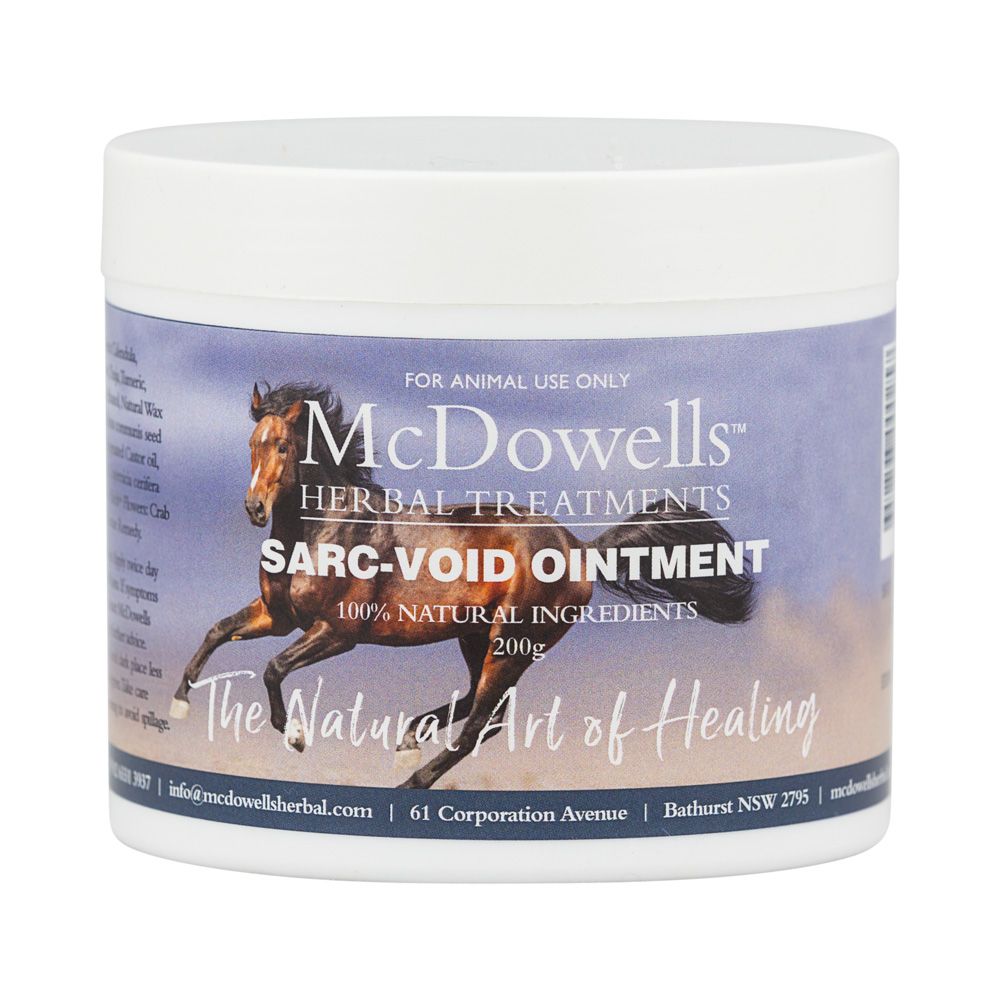A sarcoid is a growth on the skin which is thought to be caused by a virus. It grows most often on the inner thighs but may occur on any other part of the body. Sarcoids are the most common skin tumour in horses and ponies. Sometimes the journey of healing can seem long and not very direct. It can appear to be going two steps forward and one step back. When a client contacted Cath to treat a confirmed sarcoid on her horse, there were many steps to take. It is important to stay with the program for the recommended period of time.
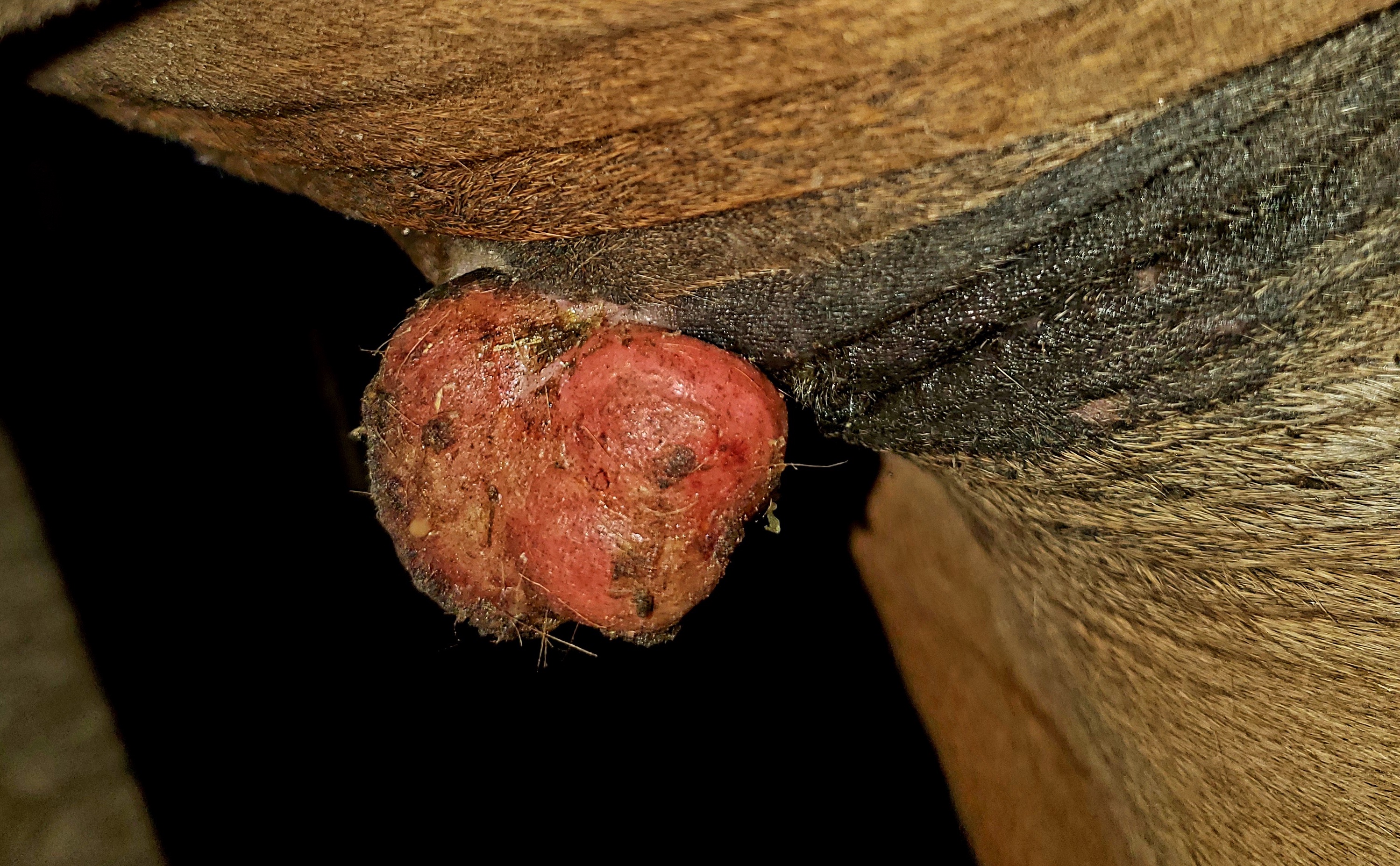
When the sarcoid was first discovered, a portion was cut off and sent in for testing to confirm sarcoid. The owners did two cryotherapy treatments, two weeks apart. It was growing instead of shrinking. The first picture was mid December 2019. He is starting to get little bumps on his chest.
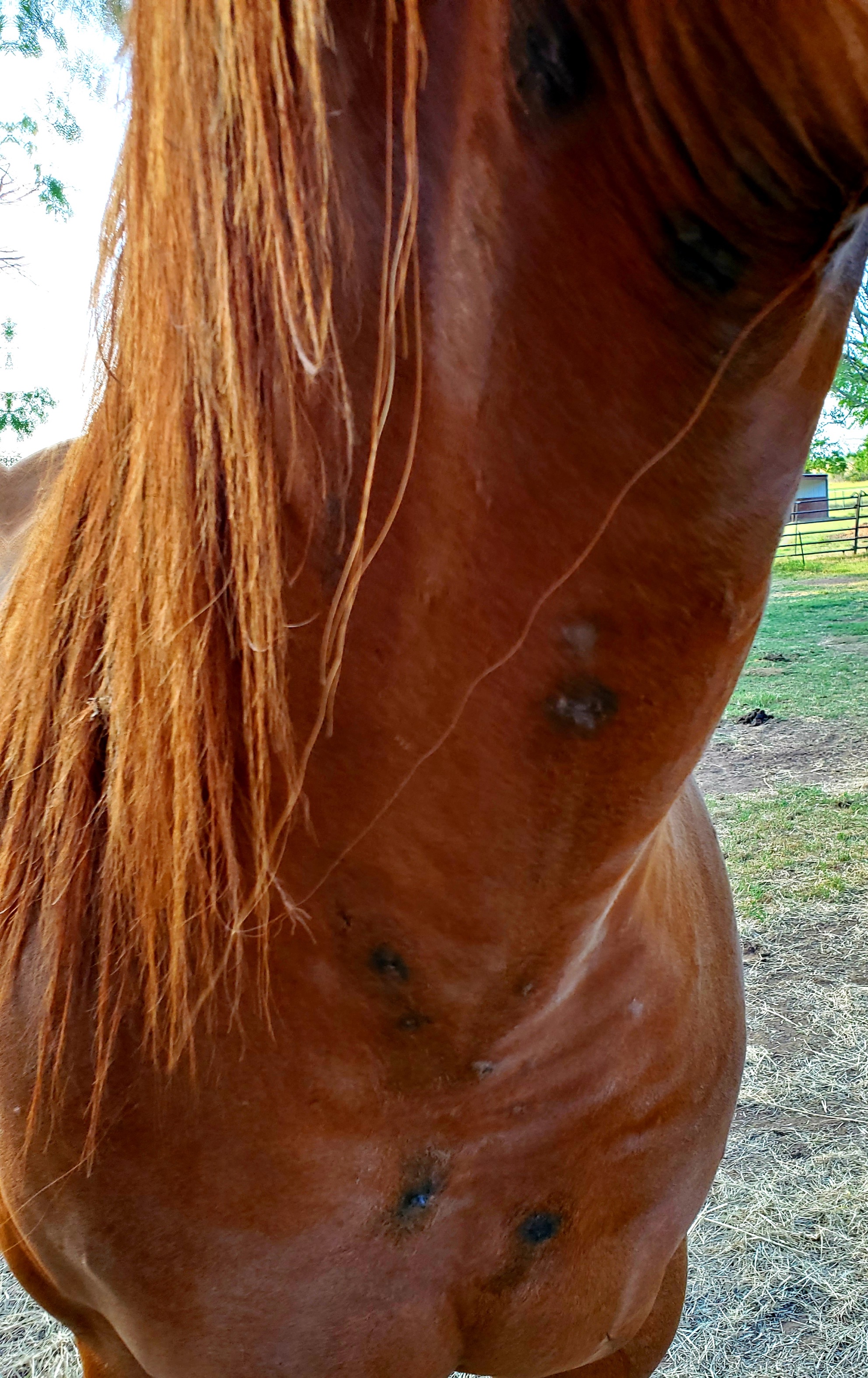
McDowells Herbal confirmed that this type of sarcoid was easier to manage than those on the lower limbs.
We recommended that the owner started the full Sarcoid program and also considered Infect-A-Clear, if they have been using Chemotherapy (in our experience chemotherapy seems to inhibit or slow the action of herbs). The owner was determined to help her horse so she could get back to riding, and also because the sarcoid bothered the horse.
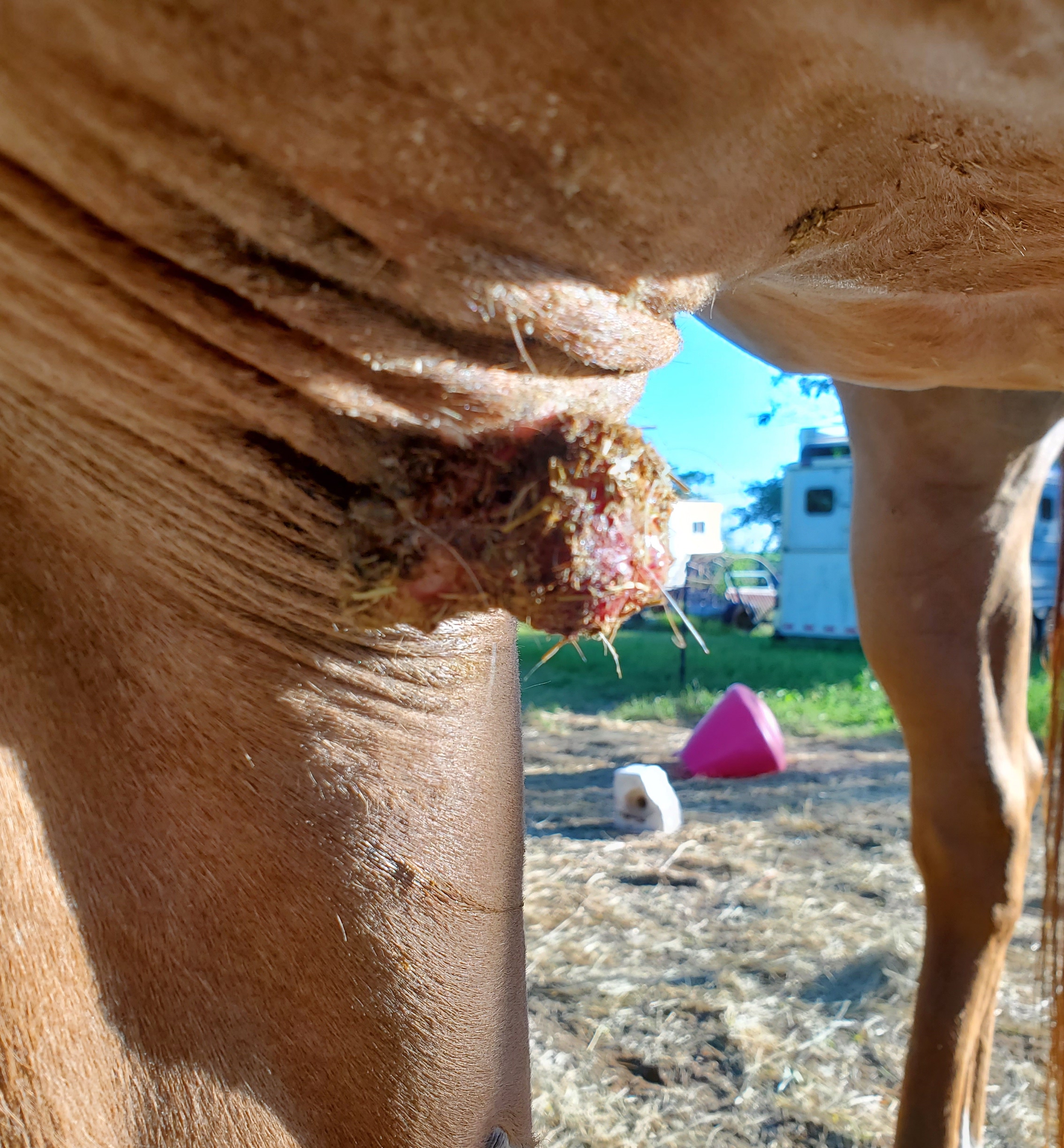
As she used the program, the client felt the sarcoid was getting larger, changing shape and becoming extremely red and angry. There are times when the horse did not want her to touch it (this is common!). Also, additional sarcoids had come out along the front of his neck. We confirmed that sometime they can start to look like this before they fall off.
It is important to remember that the deeper hidden layer of the sarcoid is being forced out by the bodies immune response. Things can get worse before they get better.
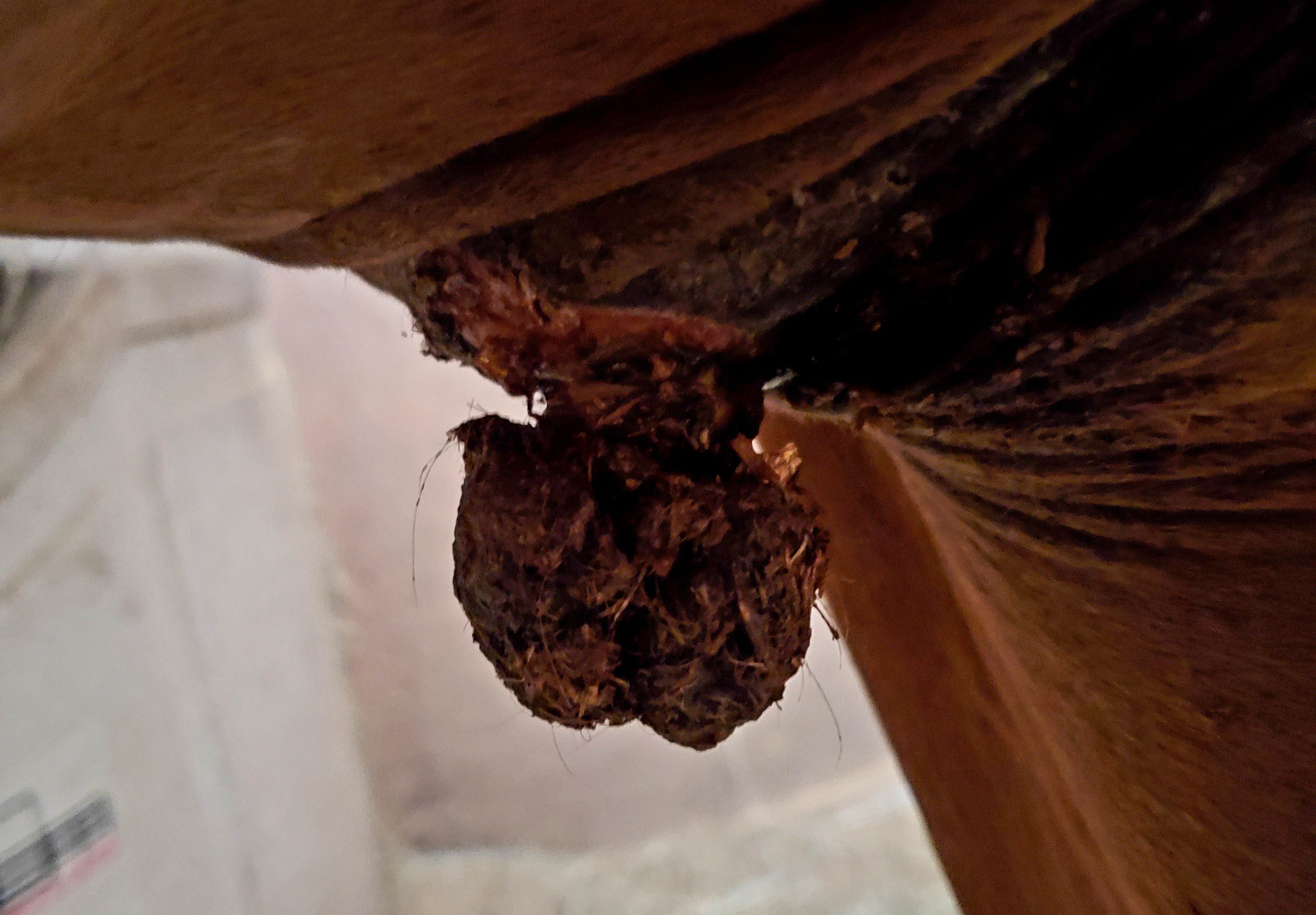
We often recommend in cases like this to consider a simple banding procedure that strangles the sarcoid at the base and helps the main section of it to fall off. If it is possible to feel at the base of the sarcoid and if it is loose and unattached at the deeper layer of muscle, we recommend the banding procedure (or using a wax thread to tie it). This is similar to the way lambs have their tails banded. It is simply removing the blood supply.
At week six, it did not look like it was falling off so the owner went ahead with the banding.
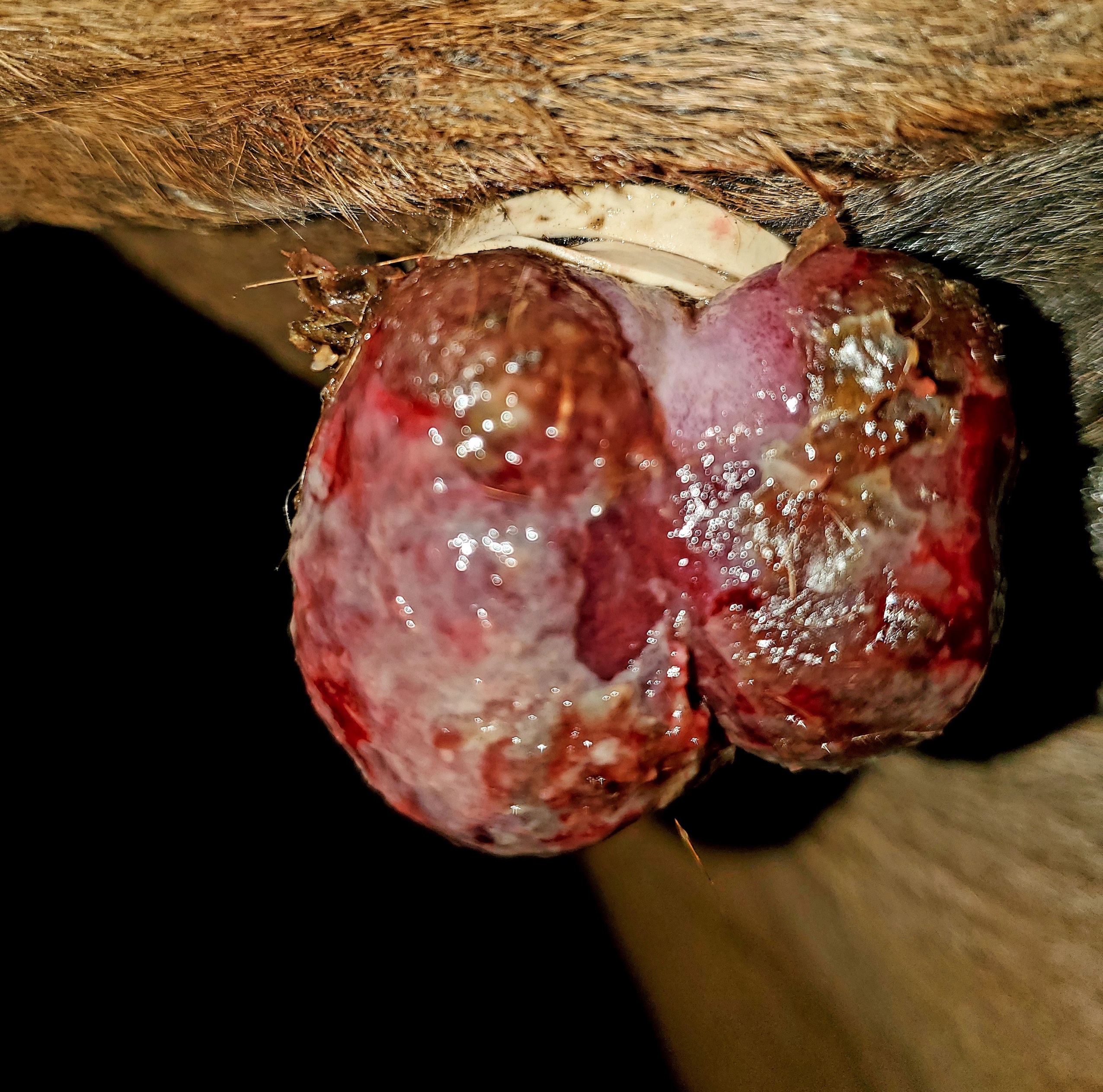
When using the banding or wax thread method, be prepared to have treat an open wound for a little while. It takes about three weeks to fall off. You may need to re-tie it if you use wax thread because it will get loose, while the rubber bands naturally contract and keep tight.
About five days after the banding, it began to turn black. This is very normal due to the fact the sarcoid has lost it's blood supply.
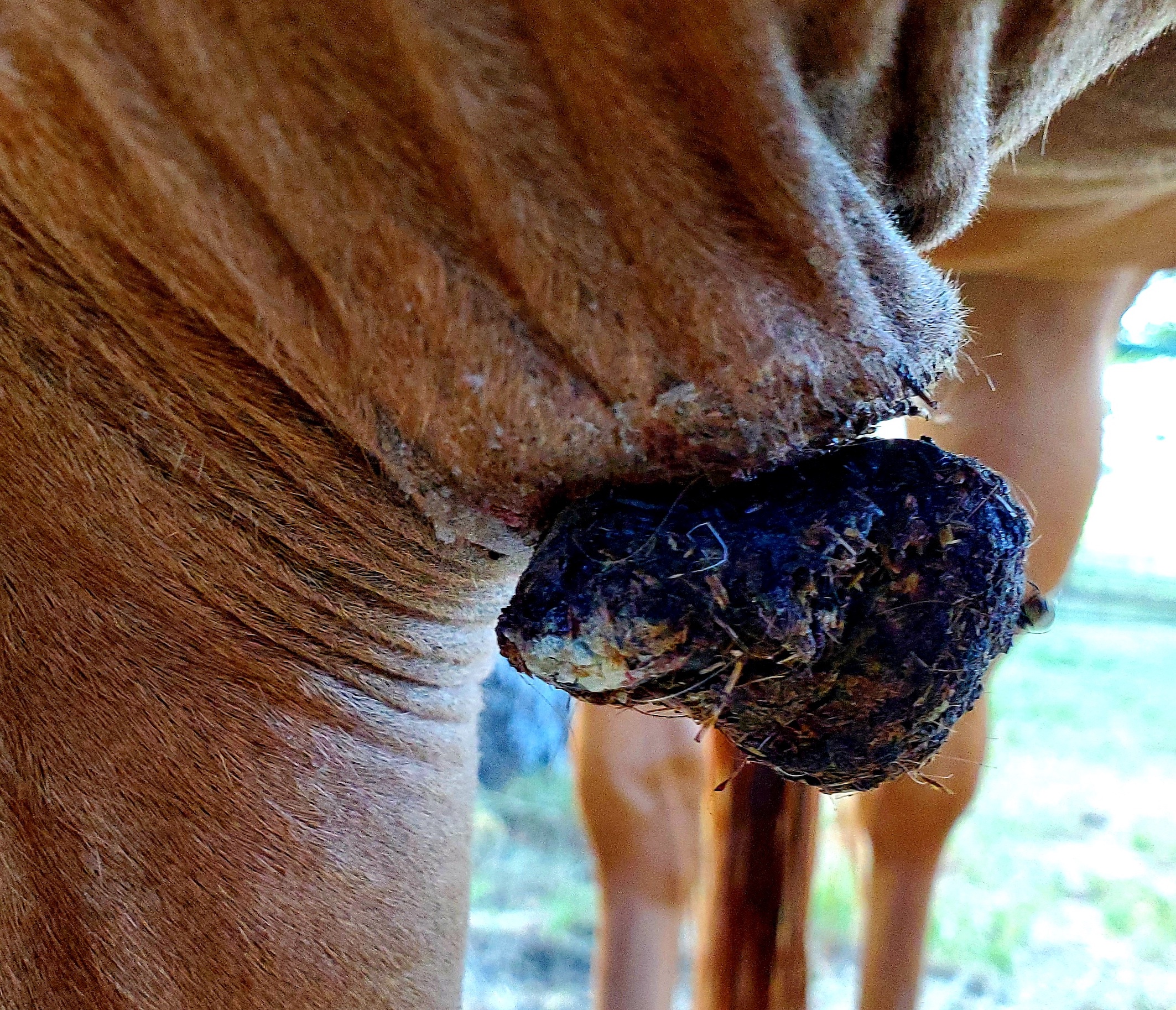
Almost two weeks later, part of sarcoid fell off.
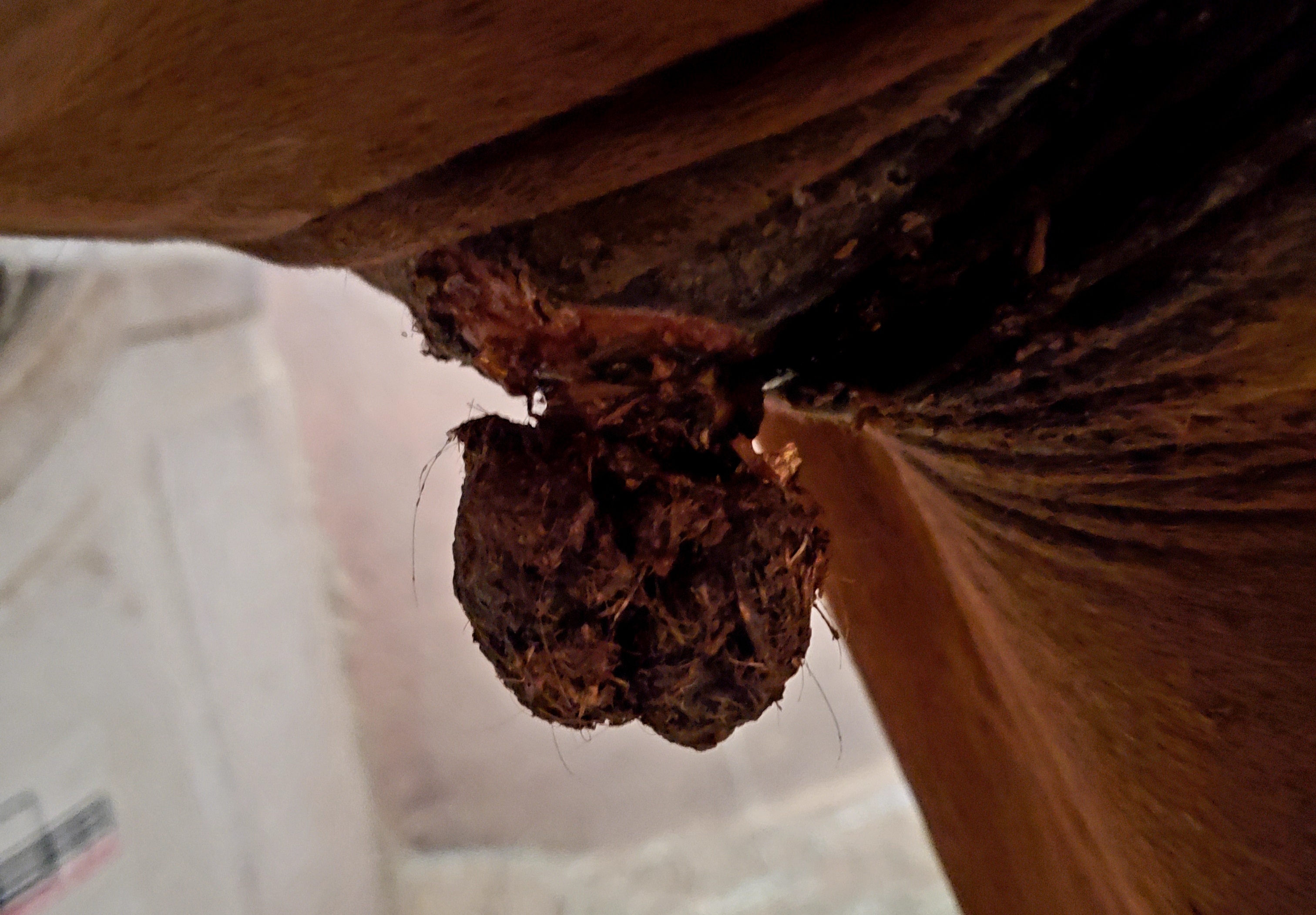
If the rubber band comes off, it may need re-banding (if possible). It needs to continue having the blood supply cut off whilst you treat the horse internally. This stage can start to look very 'messy' as it starts to detach and drop off.
You will have a wound and this can be called with colloidal silver and the ointment if you like to keep infection at bay.
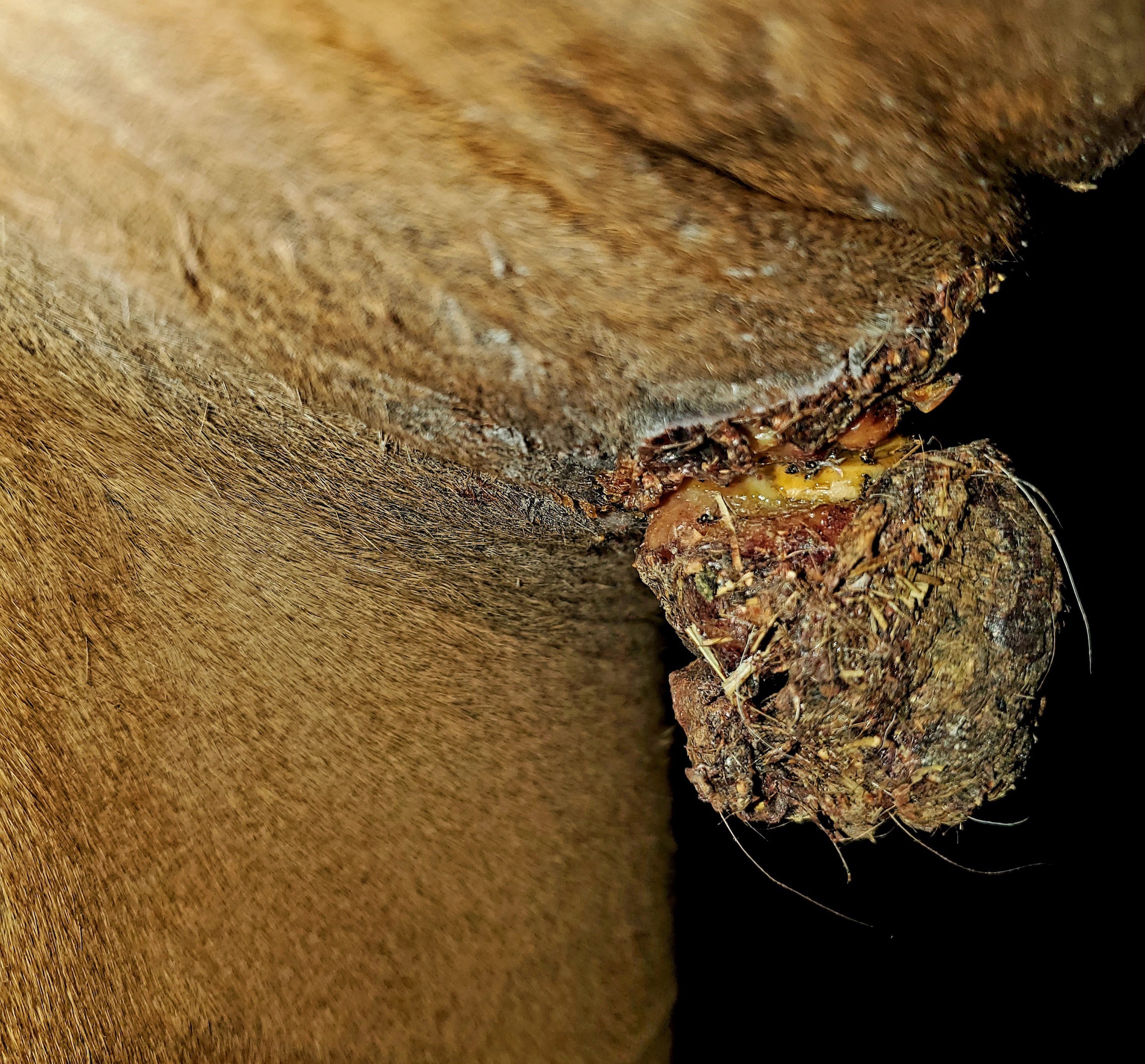
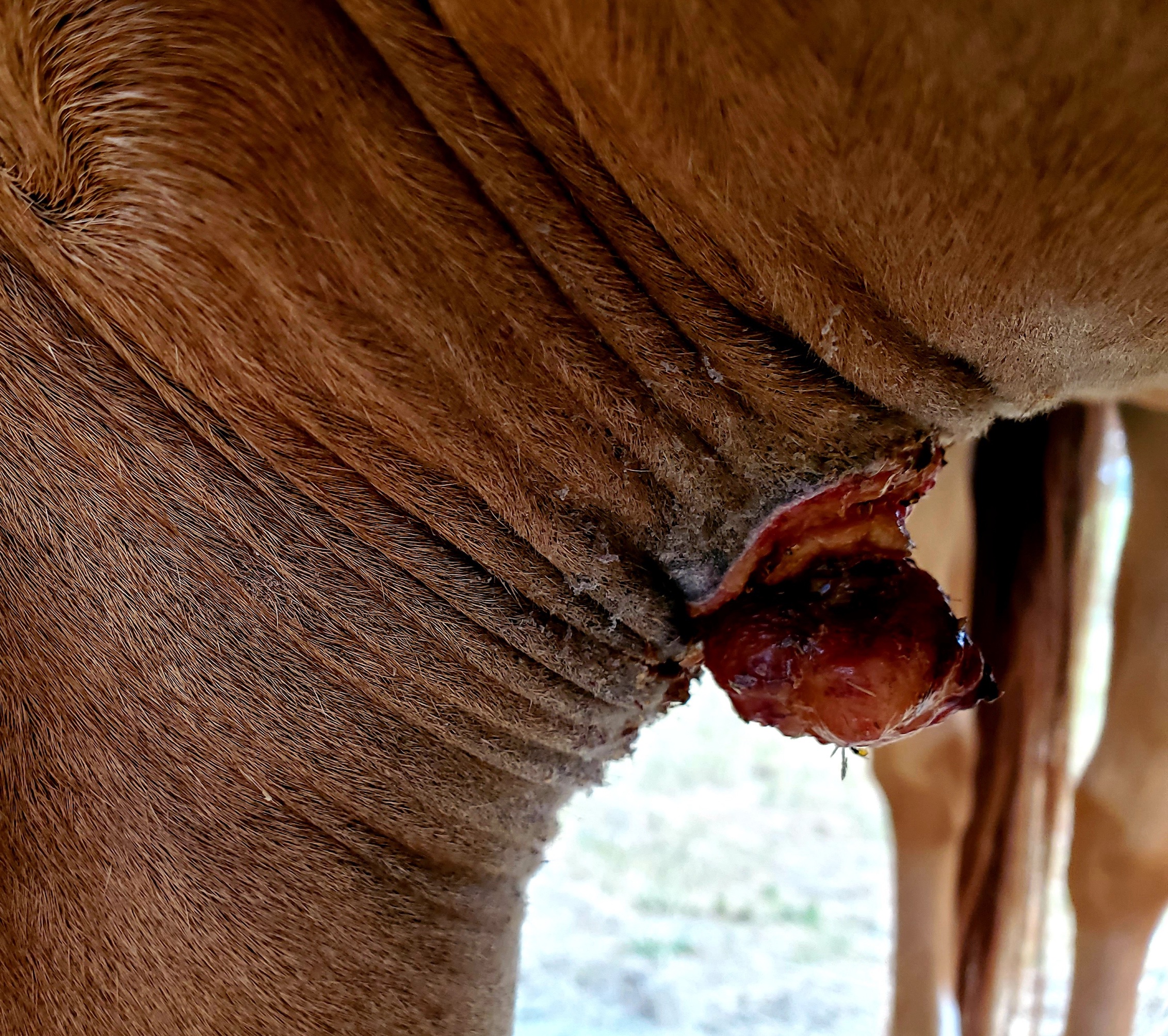
Then, as predicted, the entire sarcoid fell off.
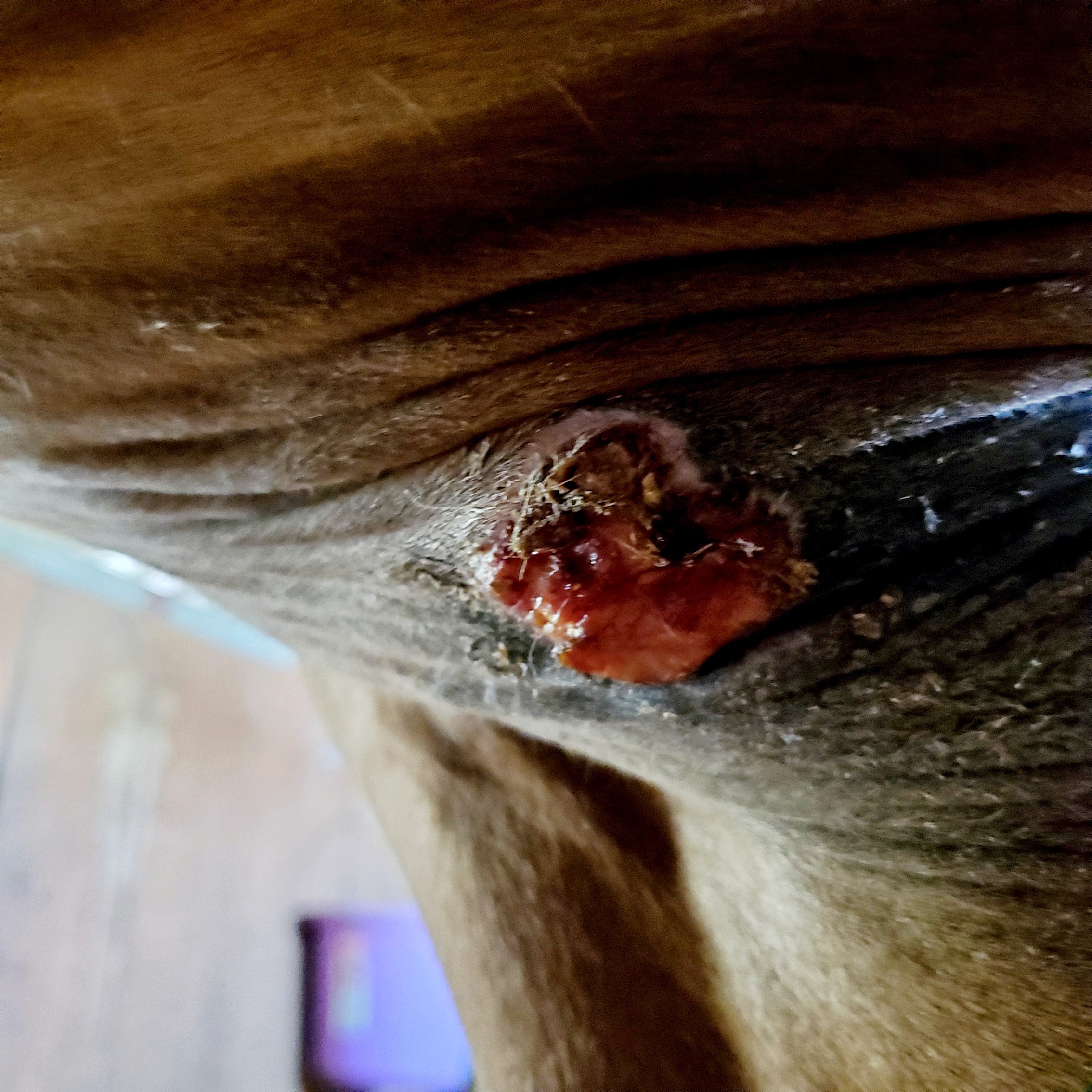
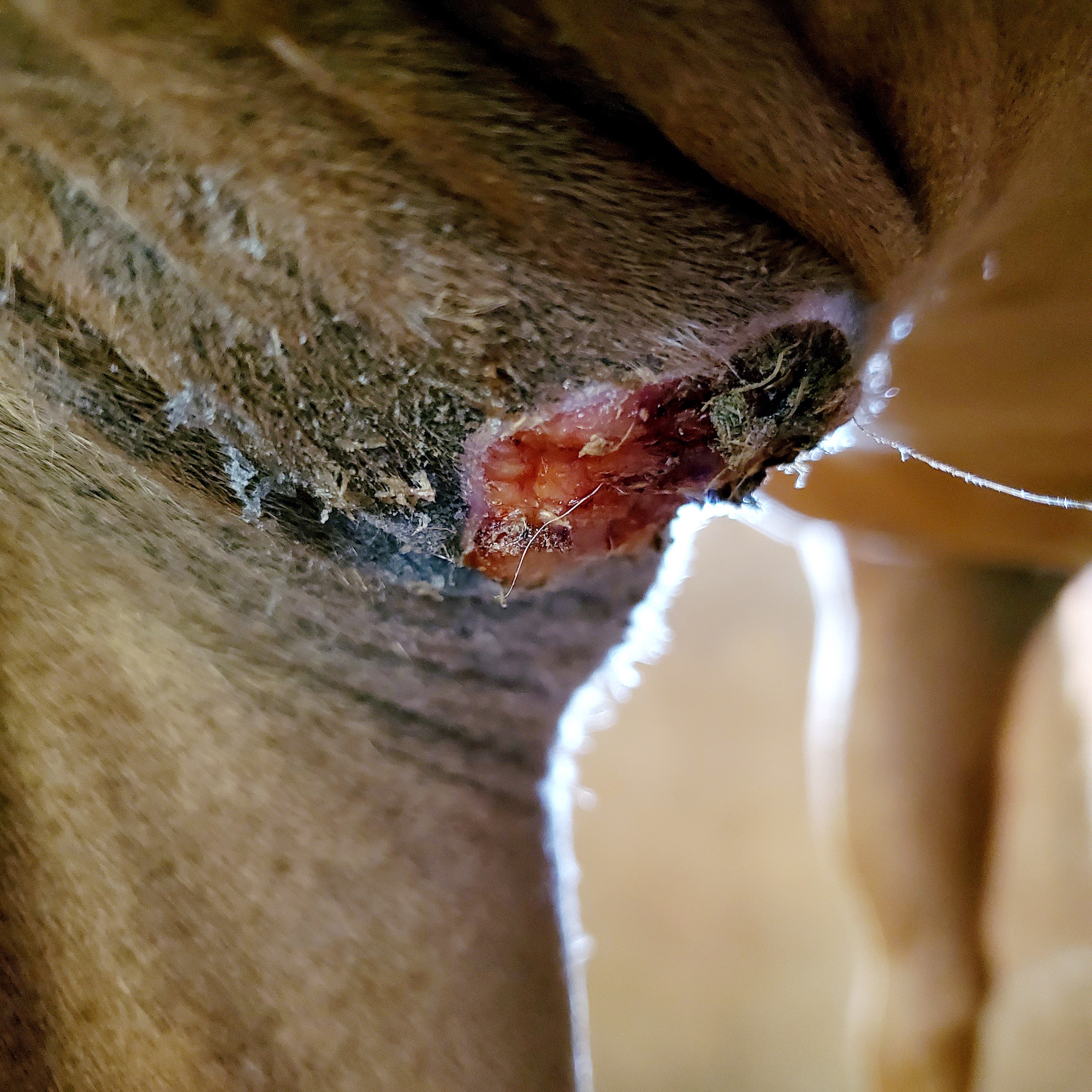
The sarcoid had then completly fallen off and the focus was on treating the wound. The owner spayed collidall silver on it twice a day and following with the Sarc-void ointment.
